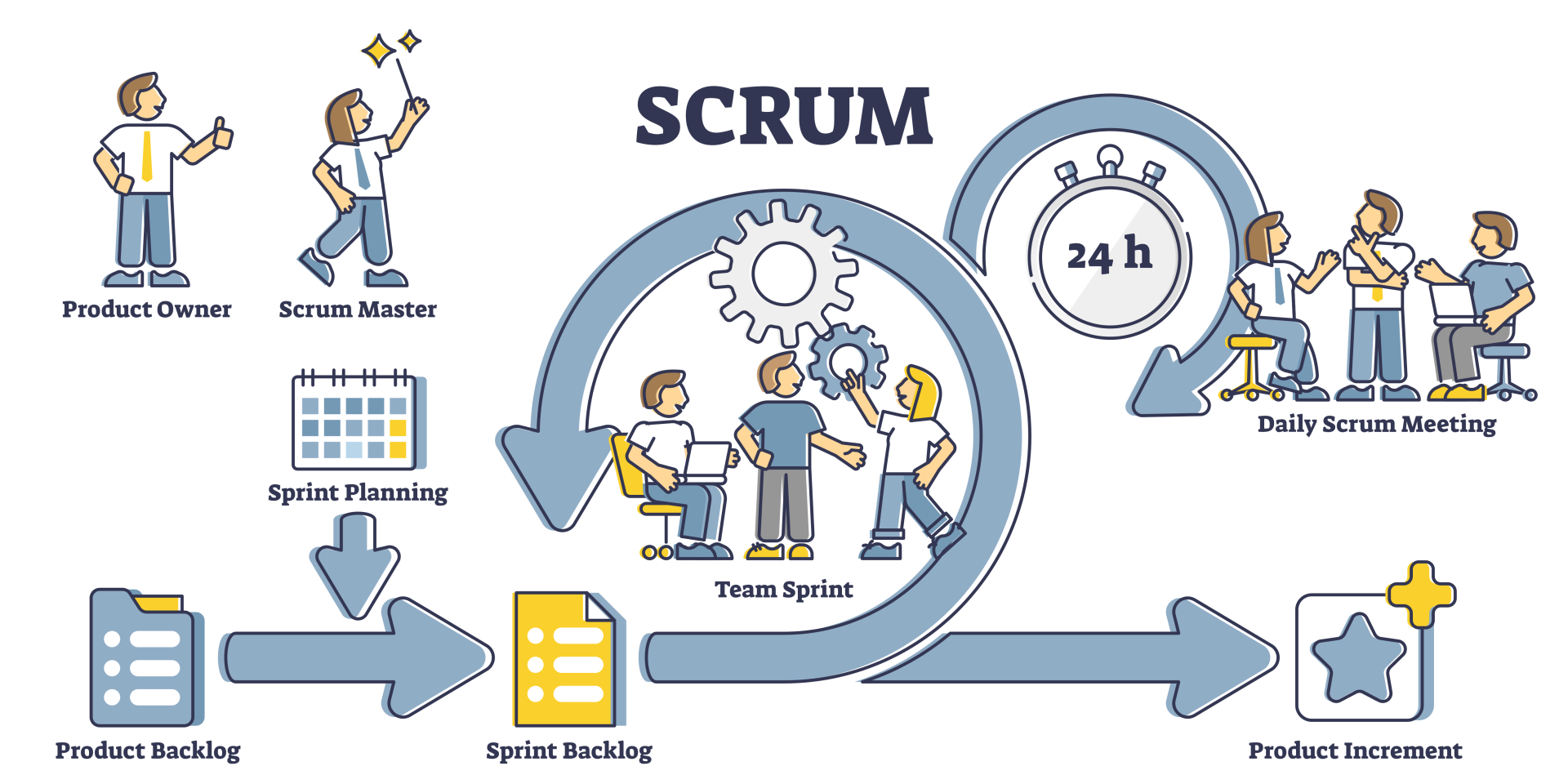Introduction to Agile and Scrum
Agile is a project management methodology that emphasizes flexibility, collaboration, and customer satisfaction. It is especially popular in software development, where the ability to adapt to changing requirements can significantly impact the end product’s success. The Agile Manifesto, created in 2001, outlines the core values and principles that drive Agile development:
Core Values of Agile
- Individuals and interactions over processes and tools
- Working software over comprehensive documentation
- Customer collaboration over contract negotiation
- Responding to change over following a plan
Principles of Agile
- Deliver valuable software early and continuously.
- Welcome changing requirements, even late in development.
- Collaborate closely with stakeholders.
- Build projects around motivated individuals.
- Use face-to-face communication as much as possible.
Introduction to Scrum
Scrum is a specific Agile framework that provides a structured yet flexible approach to project management. It divides the project into manageable segments called “sprints,” typically lasting 2-4 weeks. Scrum roles, events, and artifacts help teams work together effectively.
Key Roles in Scrum
- Product Owner: Represents stakeholders and customers, prioritizes the backlog, and ensures the team delivers value.
- Scrum Master: Facilitates the Scrum process, removes obstacles, and supports the team in adhering to Scrum principles.
- Development Team: A cross-functional group that works collaboratively to deliver the product increment.
- Stakeholders: These are parties outside the scrum team who have a reliance on the work being performed by a scrum team. They are not technically members of the scrum team but need to keep tabs on its success to advance other projects success.
Scrum Events
- Sprint: This is a designated range of days where a list of tasks to advance or enhance the product are scheduled for release to the customer facing product line.
- Sprint Planning: Teams define what work will be accomplished in the upcoming sprint.
- Daily Scrum: A short, daily meeting where team members discuss progress and obstacles (usually about 15 minutes).
- Sprint Review: A meeting at the end of the sprint to demonstrate what was accomplished.
- Sprint Retrospective: A reflection meeting where the team discusses what went well and what can be improved.
Scrum Artifacts
- Product Backlog: A prioritized list of features, enhancements, and fixes that need to be done.
- Sprint Backlog: A list of tasks to be completed during the sprint.
- Increment: The sum of all the completed backlog items at the end of the sprint.
Conclusion
By adopting the Agile methodology and employing the Scrum framework, teams can enhance their ability to deliver high-quality products while being responsive to changes. This approach fosters collaboration, encourages continuous improvement, and ultimately drives greater customer satisfaction.



